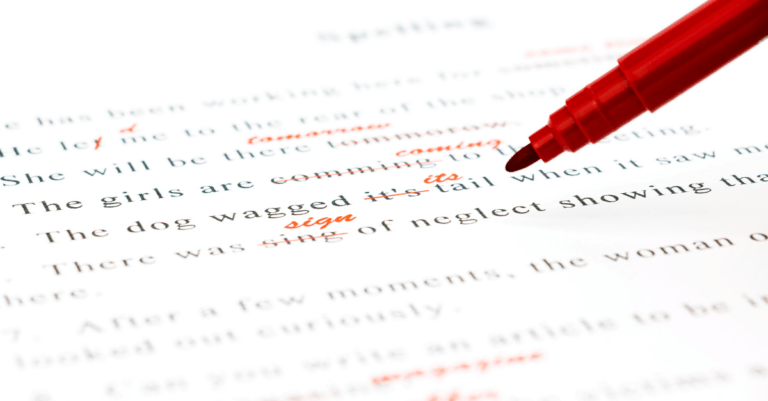Today, we turn to run-on sentences.
I bet a lot of you think that run-on sentences are just really long sentences that go on and on like the Energizer bunny. But actually, run-on sentences are sentences that lack punctuation; they can be long, but they can also be short.
What Is a Run-On Sentence?
Here’s an example of a short run-on sentence: “I’m a woman I am a truck driver.” (I was in a writing group a few years ago with an interesting woman who was writing a book about her experience as a female truck driver.) The reason “I am a woman I am a truck driver” is a run-on sentence is that it’s written without any internal punctuation. I’ve fused together two complete sentences, which is why run-on sentences are also called fused sentences.
There are a bunch of ways to fix run-on sentences; the toolbox is filled with the same basic fixes you can use to repair comma splices: periods, semicolons, and commas with coordinating conjunctions.
How Can You Fix a Run-On Sentence?
How you fix the sentence depends on how the different parts are related to each other and what tone and rhythm you want.
For example, if you want to completely separate the two fused sentences, then you’d use a period: “I am a woman. I am a truck driver.”
If you want to keep more of a connection between the two thoughts, you could use a semicolon and write, “I am a woman; I am a truck driver.”
If you want to make more of a comment on the connection between the two sentences, then you could use a conjunction with a comma. For example, you could write, “I am a woman, and I am a truck driver,” which gives a slightly different feeling compared to, “I am a woman, yet I am a truck driver,” or “I am a woman, but I am a truck driver.”
If you wanted to get fancy, you could even use a conjunctive adverb with a semicolon and a comma: “I am a woman; nevertheless, I am a truck driver.”
There are even more ways to fix run-on sentences, depending on the relationship between the different clauses. It wouldn’t work for the sentence we’ve been using so far, but if the first clause introduces the second clause, you could use a colon to connect them. My main point is that you have to use something to connect two clauses that could be complete sentences on their own. You can’t just fuse them together. If you do, that’s an error called a run-on sentence.
Break up run-on sentences from Grammar Girl’s Quick and Dirty Tips for Better Writing by Mignon Fogarty
Run-On Sentences and Your Writing Style
Sometimes people ask me how they can choose the best way to structure their sentences when there are so many different ways to connect independent clauses. In most cases, there’s no right answer to that question. You have to determine what kind of tone you want to set. For example, to me “I am a woman. I am a truck driver,” has a hard and strong tone, whereas “I am a woman; nevertheless, I am a truck driver,” has more of a conversational or confessional tone. In the first case, where I used the periods, I expect to hear a tale of conflict. In the second case, where I used a conjunctive adverb, I expect to just hear an interesting story. But the differences can obviously be subtle and subjective.
How you fix a run-on sentence depends on how the different parts are related to each other and what tone and rhythm you are trying to achieve.
When you’re writing, it’s important not to over-think your sentence structure. If you make sure your sentences are grammatically correct and write what you mean to say, there’s a good chance you’ll just automatically pick the right structure for your needs, especially if you are a native English speaker. If you get too hung up on whether to use a semicolon or a conjunction, it can inhibit your creativity (at least it can for me). Save those decisions for the editing.
Also, most people end up having a personal writing style that favors certain solutions over others for no apparent reason. I bet you can read email messages from your friends and tell who wrote most of them, no matter what the topic is, because you’ll recognize your friends’ writing styles. It can be a fun exercise to try to write in a style that is completely different from how you would normally write—just make sure you don’t fuse independent clauses together and make run-on sentences.
Image courtesy of Shutterstock.




